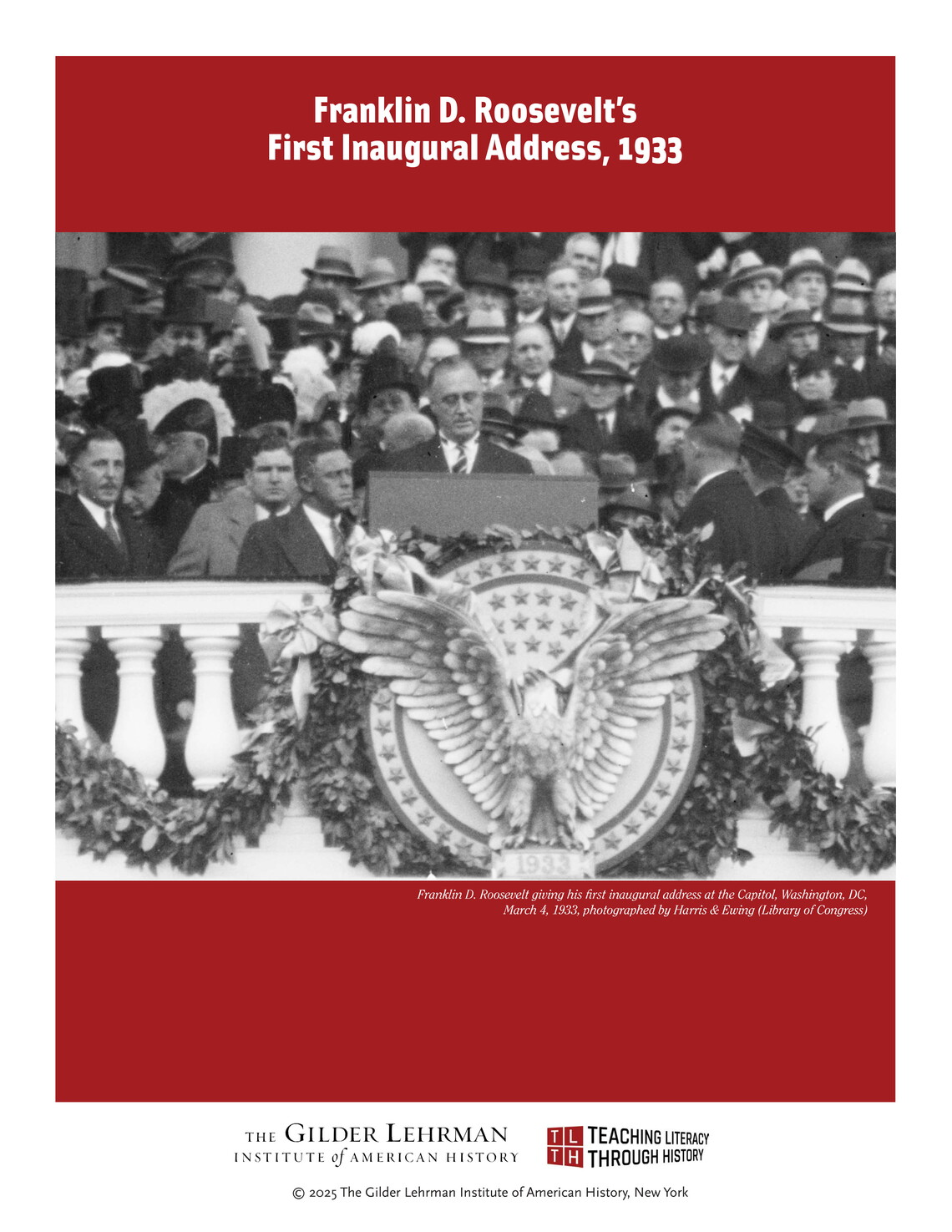Lesson by Tim Bailey
Essay by Davis W. Houck, Florida State University
Grade Level: 7–12
Number of Class Periods: 5
Primary Era: The Great Depression and World War II, 1929–1945

Over the course of five lessons, students will read, analyze, and gain a clear understanding of President Franklin D. Roosevelt’s First Inaugural Address delivered on March 4, 1933. The first four lessons require students to read excerpts from the speech “like a detective.” Employing summary organizers, practice, review, and discussion, they will master the technique of identifying key words, creating summaries of excerpts and, as an assessment in the final lesson, writing an argumentative essay.
Lesson Plan Author: Tim Bailey
Historical Background Essay by: Davis W. Houck, Florida State University
CCSS.ELA-LITERACY.RH.6-8.6: Identify aspects of a text that reveal an author’s point of view or purpose (e.g., loaded language, inclusion or avoidance of particular facts).
CCSS.ELA-LITERACY.RH.9-10.1: Cite specific textual evidence to support analysis of primary and secondary sources, attending to such features as the date and origin of the information.
CCSS.ELA-LITERACY.RH.9-10.2: Determine the central ideas or information of a primary or secondary source; provide an accurate summary of how key events or ideas develop over the course of the text.
CCSS.ELA-LITERACY.RH.9-10.4: Determine the meaning of words and phrases as they are used in a text, including vocabulary describing political, social, or economic aspects of history/social studies.
CCSS.ELA-LITERACY.SL.9-10.1: Initiate and participate effectively in a range of collaborative discussions (one-onone, in groups, and teacher-led) with diverse partners on grades 9-10 topics, texts, and issues, building on others’ ideas and expressing their own clearly and persuasively.
CCCS.ELA-LITERACY.W.8.1: Write arguments to support claims with clear reasons and relevant evidence.
How did Franklin Roosevelt describe the scale and nature of the Great Depression?
How did Franklin Roosevelt describe the cause of the Great Depression?
What policies did Franklin Roosevelt plan to enact?
President Franklin D. Roosevelt’s First Inaugural Address, March 4, 1933